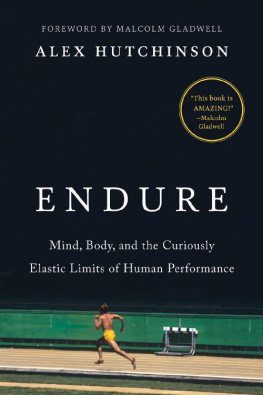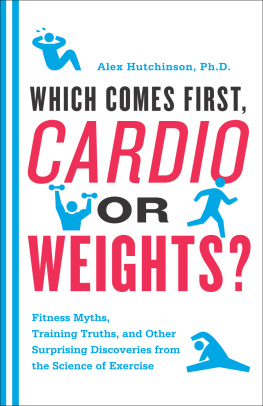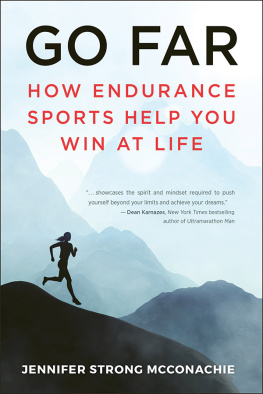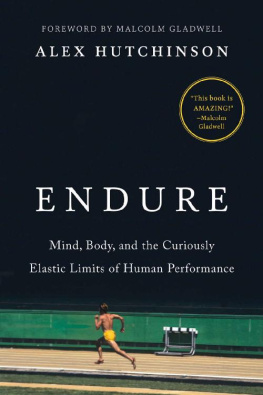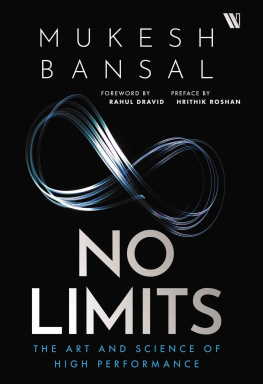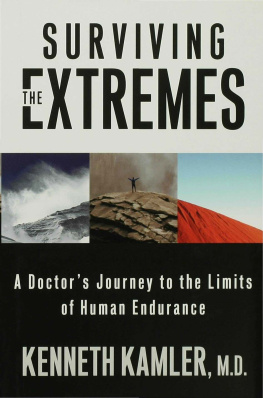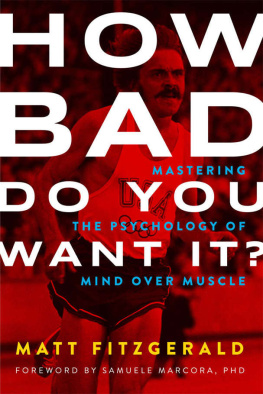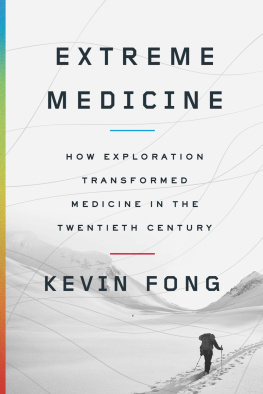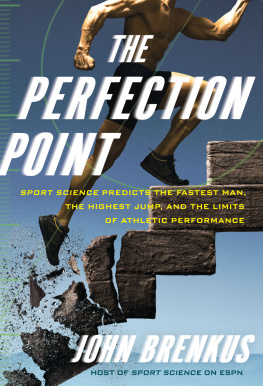For my parents, Moira and Roger, whose curiosity, rigor, respect for differing perspectives, and talent for clarity remain the model I strive for in everything I write.
Contents
Foreword
By Malcolm Gladwell
All distance runners have races that, in retrospect, make no sense. I have two. The first came when I was thirteen, in my first year of high school. With no more than a month of training under my belt, I ran a cross-country race in Cambridge, Ontario, against boys two years older than me. One of them was among the best distance runners for his age in the province. I can summon the memories of that race even today, forty years later. I simply attached myself to the leaders at the beginning and never let go, and ran myself to complete exhaustion, finishing a close and utterly inexplicable second. I say inexplicable because although I would go on to have a creditable career as a middle-distance runner on the track in high school, that race remains the only truly superb distance race Ive ever run. Ive underperformed at anything over 1,500 meters for the rest of my running life.
That is: with one exception. Two years ago, at the age of fifty-one, I ran a magical 5K in a small-town race in New Jersey, finishing a full minute faster than any 5K Id entered since returning to serious running as a Master. On that summer day in New Jersey, I was suddenly my thirteen-year-old self from forty years ago in Cambridge. I dreamt big. I marveled at my running prowess. And then? Back to mediocrity again.
Like the obsessive personand particularly obsessive runnerthat I am, I have puzzled endlessly over two those anomalous races. I have running logs from my teenage years, and Ive gone back over them, looking for clues. Was there some indication in my earliest training of that kind of performance? Did I do something special? For my latter 5K, of course, I have infinitely more. Months of data from Garmin on every workout leading up to the event, and then still more from the day of the race itself: pace, cadence, splits. On more than one occasion, leading up to a race, Ive attempted to replicate the exact preparation I had for my New Jersey PR. I want lightning to strike twice. It hasnt, and Im beginning to suspect the reason it hasnt is that I dont properly understand what it means to perform a feat of endurance. I think you can see where Im going with this: I am the perfect audience for Alex Hutchinsons Endure.
A few words about Alex Hutchinson. We are both Canadians and both runners, although he is both a better Canadian (he still lives there; I dont) and a much better runner than I ever was. He invited me once to a tempo run he does with his friends on Saturday mornings in a cemetery in North Toronto. As I recall, I finished lastor maybe second last, since one of his running crew very sweetly condescended to run at my pace. Alex disappeared from sight after the first bend. As you will discover, as you continue in this book, Alex writes about the mysteries of endurance as a student of the science, a sports fan, and a keen observer of human performancebut also as a participant. He has his own anomalous races to explain.
It must be stressed, though, that this is not a running book. There are plenty of running books out there, and as a runner I have read many of them. But they are insiders accounts written for other insiders: whether or not a runner should fore-foot or heel-strike, or aim for a cadence of 180 strides per minute, is a question only of significance to runners whose self-involvement extends all the way to the soles of their feet. But one of the (many) pleasures of Endure is how convincingly Hutchinson broadens the stakes. In one of my favorite passages, from the , Hutchinson writes of the attempt by Jens Voigt to break cyclings one-hour record. Voigt was famously indifferent to pain. But when he climbed off his bike, after breaking the record, Hutchinson tells us he was in agony: the pain hed been pushing to the margins of his consciousness came crashing down. That is a cycling story. But in Hutchinsons hands it also becomes a way of asking a much deeper and more consequential question about how our physiology interacts with our psychology. In a wide variety of human activity, achievement is not possible without discomfort. So what is our relationship to that pain? How do the signals of protest from our brain interact with the physical will to keep moving? You dont have to be a maniacal cyclist to appreciate that discussion. If anything, that discussion is likely to dissuade you from ever becoming a maniacal cyclist. Everything was aching, Voigt said. My neck ached from holding my head low in that aerodynamic position. My elbows hurt from holding my upper body in that position. My lungs hurt after burning and screaming for oxygen for so long. My heart hurt from the constant pounding. My back was on fire, and then there was my butt! I was really and truly in a world of pain. Oh man. It was painful just to read that passage.
Does Endure solve the puzzle of the anomalous race? In one sense, yes. My problem, I now realize, is that I tried to make sense of those performances using an absurdly simple model of endurance. The time I ran was my output. And so I worked backward and tried to identify the corresponding inputs that must have made it possible. Did I take one day of rest beforehand, or two? How quick was that hill workout the week before? Is there something to be learned from the last set of intervals I did? The data that we gather from our GPS sports watches makes this kind of thinking even more seductive: it encourages us to paint a simple picture of how and why our body moves through the world. After youve read Endure, I promise you, youll never settle for the simple picture again. There are many things Garmin cannot tell you. And luckily, for those many things, we have Alex Hutchinson.
Two Hours
May 6, 2017
The broadcast booth at the Autodromo Nazionale Monza, a historic Formula One racetrack nestled in the woodlands of a former royal park northeast of Milan, Italy, is a small concrete island suspended in the air over the roadway. From this rarefied vantage point, Im trying to offer thoughtful guest commentary to a live-streaming audience of an estimated 13 million people around the world, many of whom have rousted themselves out of bed in the middle of the night to watch. But Im getting antsy.
The race beneath me is hurtling toward a conclusion that almost no one, through months of speculation and spirited debate, had considered possible. Eliud Kipchoge, the reigning Olympic marathon champion, has been circling the racetrack for an hour and forty minutes behind an exquisitely choreographed formation of runners blocking the wind for himand, remarkably, hes still on pace to run under two hours for 26.2 miles. Given that the world marathon record is 2:02:57, and given that records are usually shaved down in hard-fought seconds, Kipchoges performance is already straining the limits of my ability to convey surprise and awe. Giant screens in front of me are flashing detailed statistics about Kipchoges run, but my mind is drifting away from punditry. I want to slip out of the booth and get back down to the side of the trackto feel the crackling tension in the assembled crowd, to hear the rasp of Kipchoges breath as he runs past, and to look into his eyes as he pushes deeper into the unknown.
In 1991, Michael Joyner, an ex-collegiate runner from the University of Arizona who was completing a medical residency at the Mayo Clinic in Minnesota, proposed a provocative thought experiment. The limits of endurance running, according to physiologists, could be quantified with three parameters: aerobic capacity, also known as VO2max, which is analogous to the size of a cars engine; running economy, which is an efficiency measure like gas mileage; and lactate threshold, which dictates how much of your engines power you can sustain for long periods of time. Researchers had measured these quantities in many elite runners, who tended to have very good values in all three parameters and exceptional values in one or two. What would happen, Joyner wondered, if a single runner happened to have exceptionalbut humanly possiblevalues in all three parameters? His calculations suggested that this runner would be able to complete a marathon in 1:57:58.

